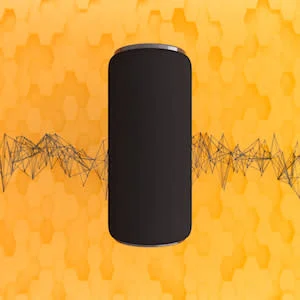#SIR19ATX: Research demonstrates value of Amazon Echo and Google Home during medical procedures
AUSTIN, TEXAS —Smart speakers that are customarily used in your living room can be programmed to act as an aid to physicians in hospital operating rooms, according to new research presented at the Society of Interventional Radiology’s 2019 Annual Scientific Meeting. Smart speakers, such as the Amazon Echo and Google Home, offer a conversational voice interface that allows interventionalradiology (IR) physicians to ask questions and retrieve information needed for their patient treatments without breaking sterile scrub.
“During treatment, IRs rely on nuanced medical information delivered in a timely manner. When you’re in the middle of a procedure, you need to remain sterile, so you lose the ability to use a computer,” said Kevin Seals, M.D., a fellow in interventional radiology at the University of California, San Francisco (UCSF) and lead author of the study. “This smart speaker technology helps us to quickly and intelligently make decisions relevant to a patient’s specific needs.”
The researchers at UCSF developed a device-sizing application for the Google Home smart speaker. The application processes questions from a human voice and provides recommendations on the precise sizing of medical devices. For example, if an IR needs to know what size sheath to use to implant a stent in a patient’s blood vessel, the smart speaker can quickly and accurately communicate the correct size based on the specific circumstances, which helps the physician in making a final decision.
“There are hundreds of devices, with more being introduced every day, making it difficult to determine the correct sizing or materials needed in every circumstance. This technology allows physicians to concentrate more closely on the care of their patients, devoting less time and mental energy to device technicalities,” said Seals.
In developing the application, size specifications were acquired using literature reviews for 475 IR devices, such as catheters, sheaths, stents, vascular plugs and others. Natural language processing was implemented using Dialogflow, which extracted the information of interest from an input query. Logic operations and other data processing were performed using a Python script deployed to the cloud.
The researchers plan to continue to build on this technology and expand its scope to include information on material costs and inventory databases. Having this information readily available will make treatments more efficient, cost-effective and beneficial to patients. Further research will look to yield information for physicians in other specialties and provide information from electronic health records and patient clinical data, such as allergies or prior surgeries.
Source: SIR2019
Image credit: iStock
Reference: Abstract 38: The Development of a Machine Learning Smart Speaker Application for Device Sizing in Interventional Radiology. K. Seals; R. Al-Hakim; P. Mulligan; E. Lehrman; N. Fidelman; K. Kolli; R. Kohlbrenner; M. Kohi; A. Taylor. UCSF, San Francisco, CA; Oregon Health & Science University, Portland, OR; Emory University School of Medicine, Atlanta, GA; UCSF, San Francsico, CA; University Of California San Francisco, San Francisco, CA; University of California, San Francisco, San Francisco, CA. SIR Annual Scientific Meeting, March 23–28, 2019.
This abstract can be found at sirmeeting.org.
Latest Articles
Imaging, Radiology, Data, physicians, interventional radiology, big data, electronic health records, IR, cloud technology, Society of Interventional Radiology, EHR data, Medical Information Technology, University of California, Texas, Smart speakers, SIR, SIR2019, Austin, Amazon Echo, Google Home, patient treatments, San Francisco, Dialogflow, Python, patient clinical data
AUSTIN, TEXAS —Smart speakers that are customarily used in your living room can be programmed to act as an aid to physicians in hospital operating rooms, according to new research presented at the Society of Interventional Radiology’s 2019 Annual Scientif










